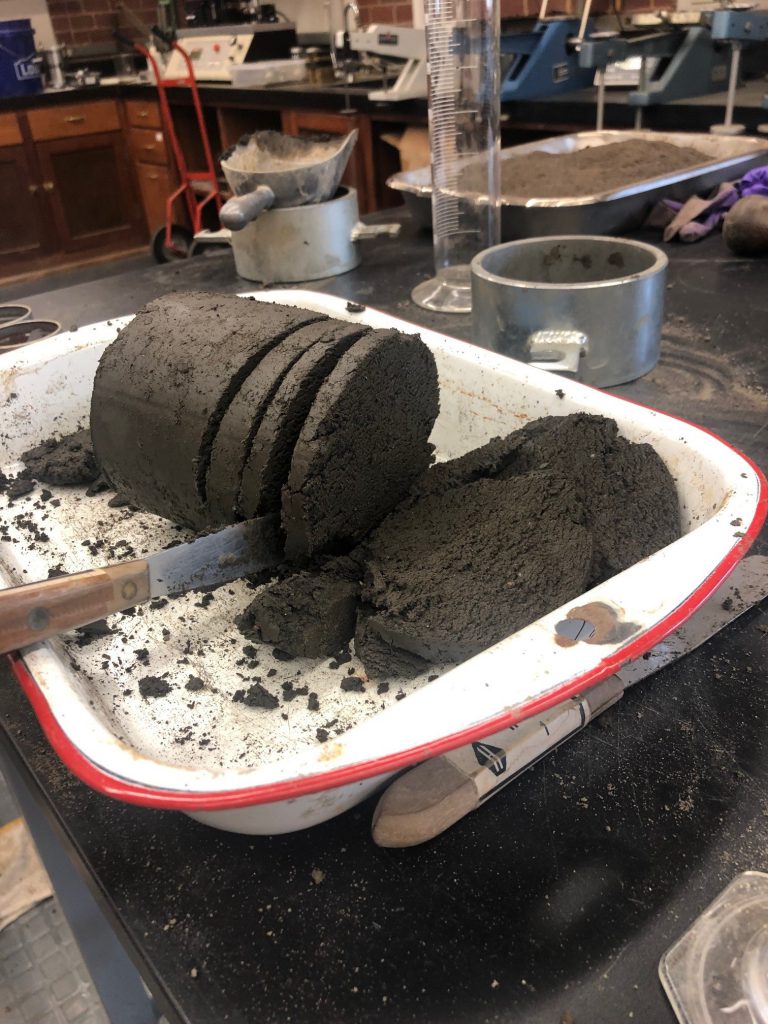
Photo above: pluff mud specimens after compacting. Photo credit: Marc Dolder, Citadel veteran student.
To some, it has a rich, earthy, salty smell that fondly reminds them they are home. To others, the percolating, popping mud that is ubiquitous with the sweeping tidal marshes and rivers of the South Carolina Lowcountry is just…stinky.
It’s the “why” behind the scent of pluff mud, and the thought of making use of this vast natural resource, that’s behind an on-going undergraduate research project in the Department of Civil and Environmental Engineering at The Citadel.
The region’s pluff mud is well known for its pungent smell in southern coastal areas,” said Simon Ghanat, Ph.D., a Citadel professor recently named South Carolina Civil Engineer of the Year, “however, very little is known about the composition of the soil and its potential for practical uses in engineering.”
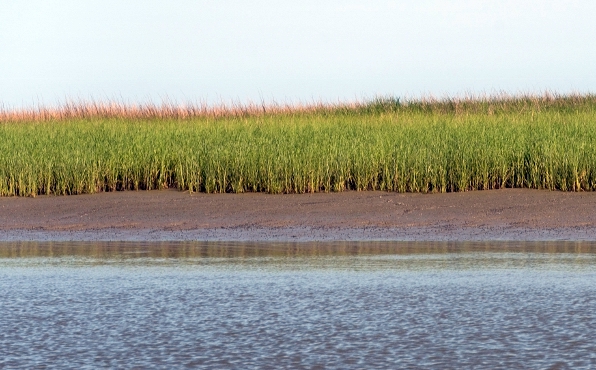
According to Ghanat, the dark, soft soil is the product of decay, including sporobolus (formerly called spartina) grasses, oysters, crabs, shrimp and other marine life. “The rotten egg smells comes from anaerobic bacteria working on the pluff mud by releasing hydrogen sulfide,” he said. It is the detailed composition of the deeper layers of the soil that interests Ghanat and his students.
Civil engineering majors, Marc Dolder and Calvin Pitts, worked with Ghanat for several months, sampling, testing and analyzing the properties of pluff mud. Dolder is a veteran day student and Pitts is in the evening undergraduate studies program.
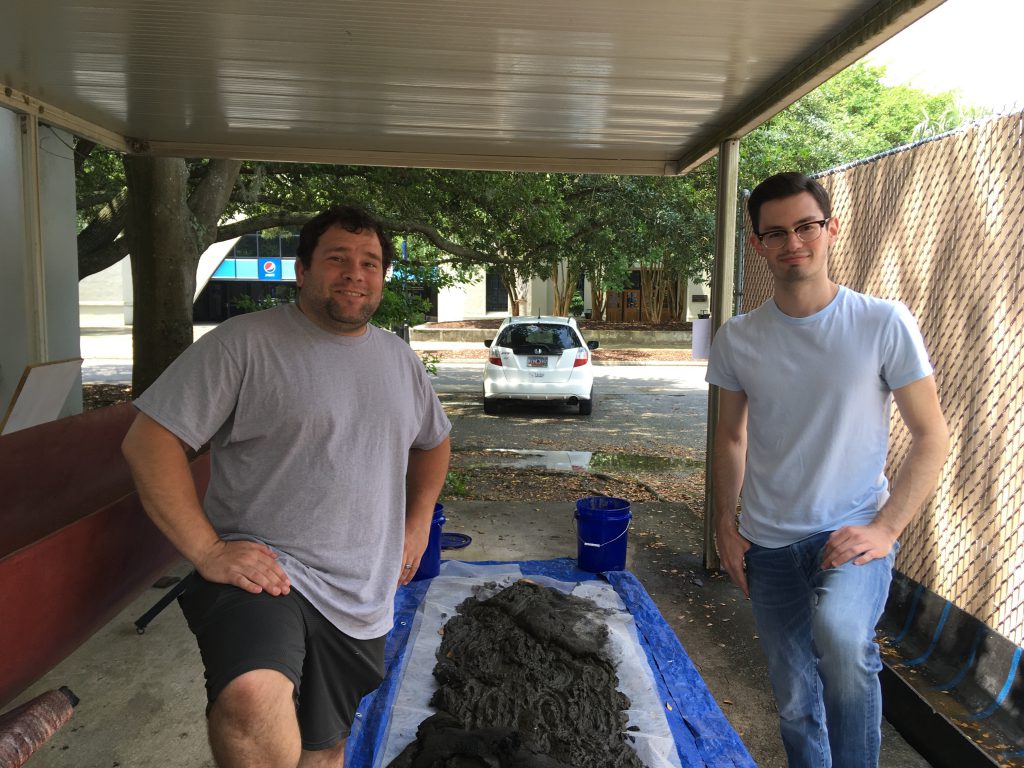
“My goal is to eventually find a way to stabilize pluff mud so builders don’t have to keep hauling it away. This would save money and be better for the environment,” Dolder said.
The process involved compacting specimens of pluff mud into cylindrical molds.
“Specimens were compacted at numerous water content stages to establish a compaction curve. After compaction, each specimen was extruded from the mold and weighed to determine its total mass,” Dolder said.
The undergraduate researchers determined the natural water content, particle size distribution, liquid limit and lastic limit.
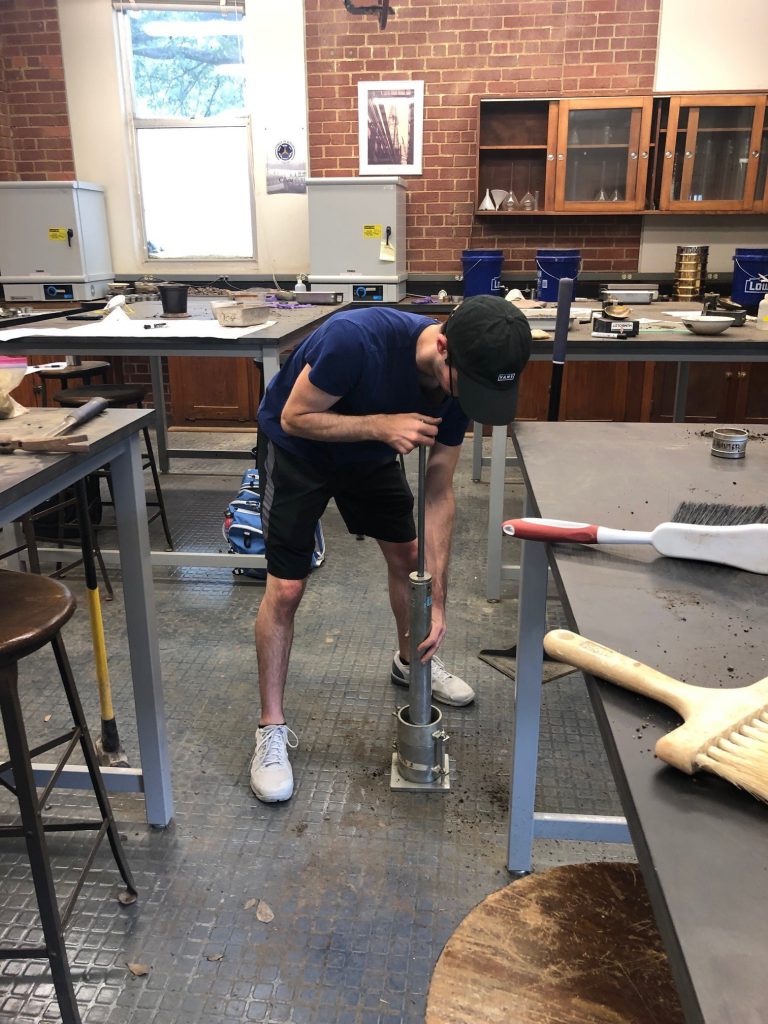
“The average water content of each specimen was determined by oven drying of samples,” Dolder continues. “Once the compaction tests were completed, the measured values of dry unit weight were plotted as a function of moisture content for each compaction test. Through this process we identified the optimum moisture content and the maximum dry unit weight of the pluff mud. “
In the end, the researchers determined that pluff mud can be stabilized. “With more research, we believe pluff mud could be could be made usable,” Dolder concluded.
The students work revealed important characteristics for future research, such as the fact that samples from different locations, even only a few miles apart, behaved very differently. They also investigated the effects of adding hydrated lime to the pluff mud samples. “The lime influenced the properties of the mud by increasing its optimum moisture content making it more stable,” Ghanat explained.
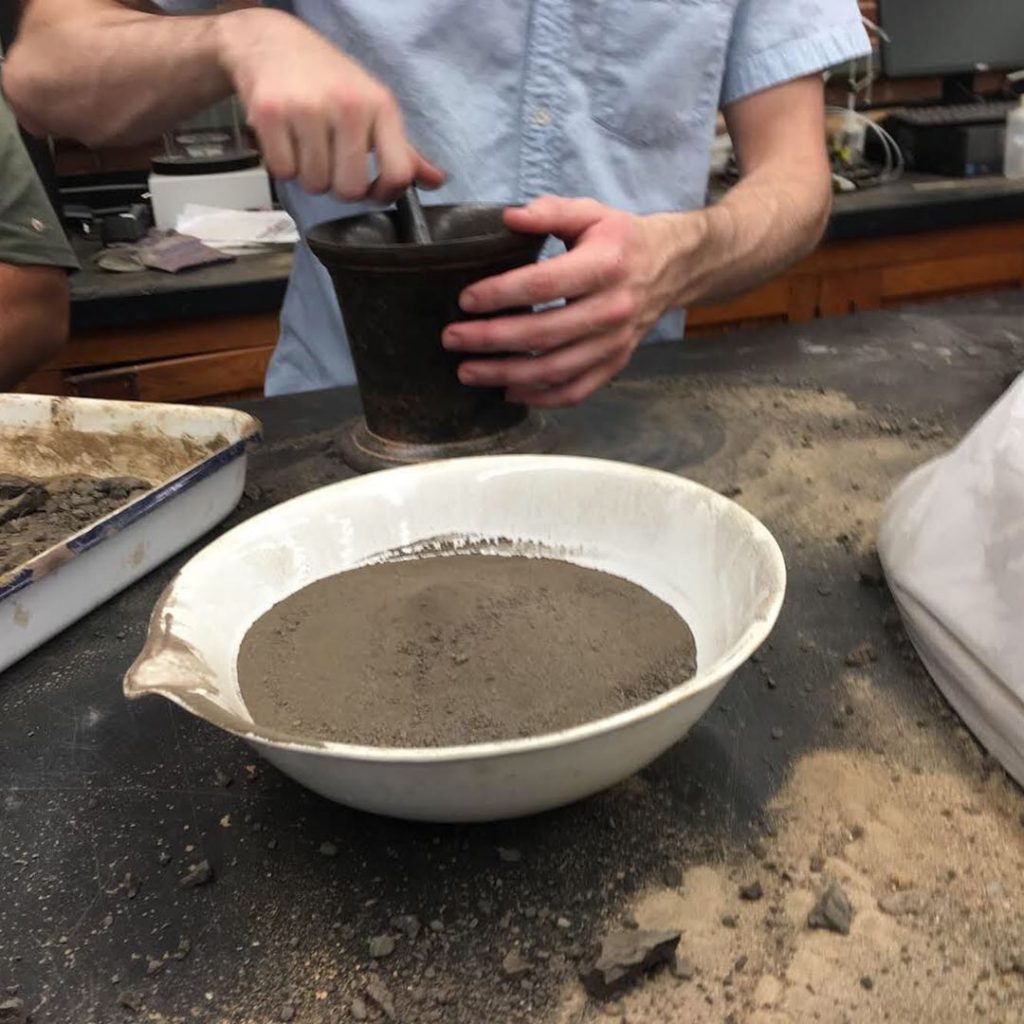
Dolder and Pitts were paid during the months of they conducted their research through The Citadel Summer Undergraduate Research Experience.
“There are countless benefits from undergraduate research like this, not only for the students, but for the industries improved through this work.” Ghanat said. “Our plan is to continue the pluff mud work with additional undergraduate researchers next summer, to develop more data to assist Lowcountry engineers.”

 Citadel President to retire, culminating a 50-year career in public service
Citadel President to retire, culminating a 50-year career in public service SoCon recognizes Annetta, Leonard as all-conference faculty and staff honorees
SoCon recognizes Annetta, Leonard as all-conference faculty and staff honorees Breaking ground for the upcoming Krause School of Leadership and Ethics
Breaking ground for the upcoming Krause School of Leadership and Ethics



